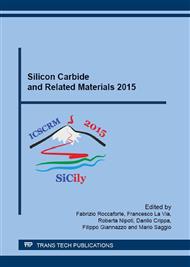p.864
p.868
p.872
p.876
p.880
p.885
p.889
p.894
p.903
Using SiC MOSFET’s Full Potential – Switching Faster than 200 kV/μs
Abstract:
SiC-MOSFETs are available since several years, but unlike SiC diodes they have not arrived in the mass market yet. The main reason is that the higher costs do not get compensated by the technical advantages in common applications. This lack is not only caused by the SiC-MOSFETs itself, but also by the packaging and the gate drivers. Consequently the main challenge for getting SiC-MOSFETs to a wider acceptance by application engineers is to show how all benefits of the new technology can be used. This paper demonstrates how SiC-MOSFETs can be operated in a standard half bridge application with exceptional switching speeds of less than 4 ns, resulting in slopes of more than 200 kV/μs and lowest possible switching losses. Previous publications have claimed to use “the full potential of the SiC devices for power conversion applications” achieving switching times of 20 ns [1].
Info:
Periodical:
Pages:
880-884
Citation:
Online since:
May 2016
Authors:
Price:
Сopyright:
© 2016 Trans Tech Publications Ltd. All Rights Reserved
Share:
Citation:


